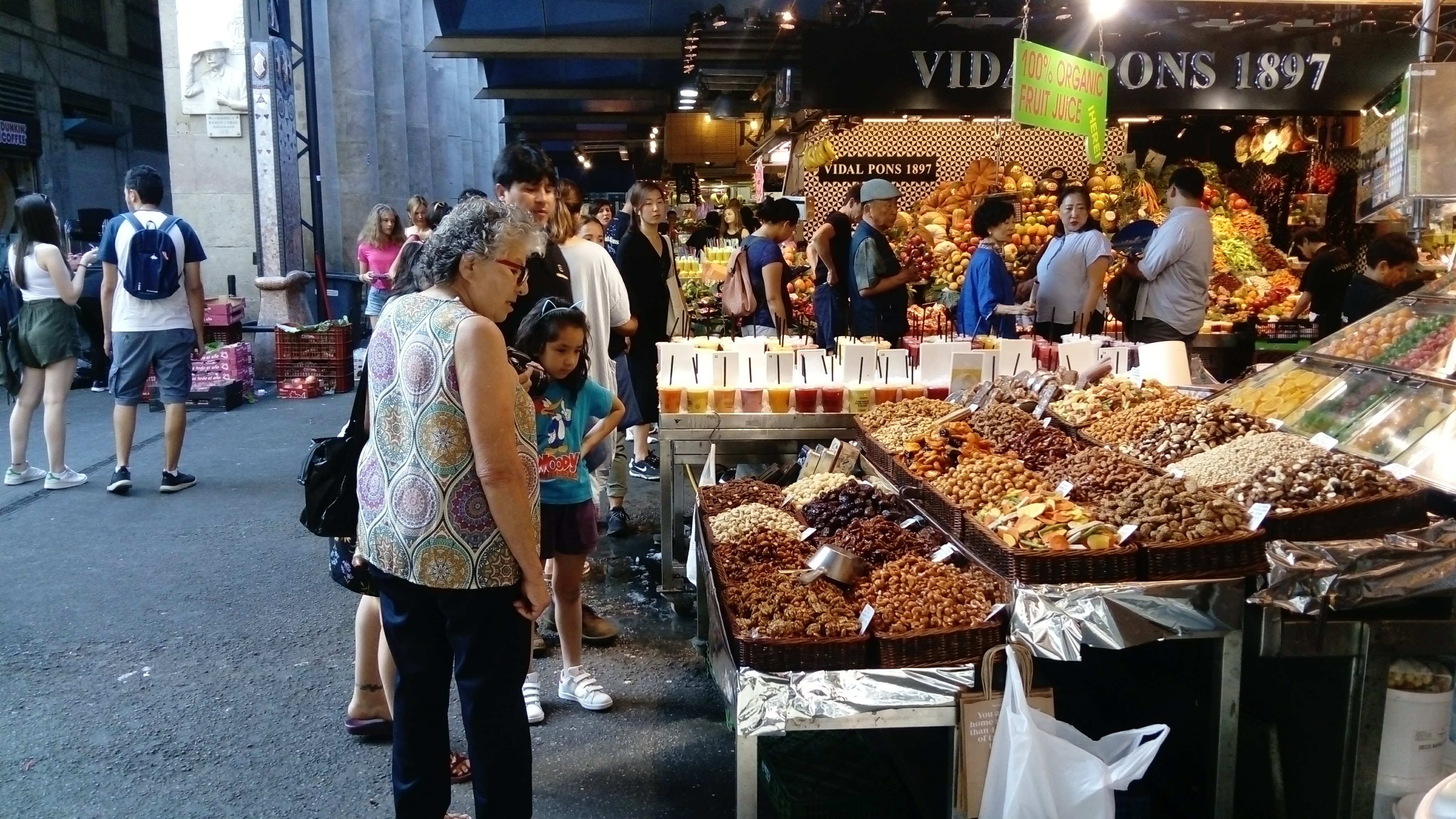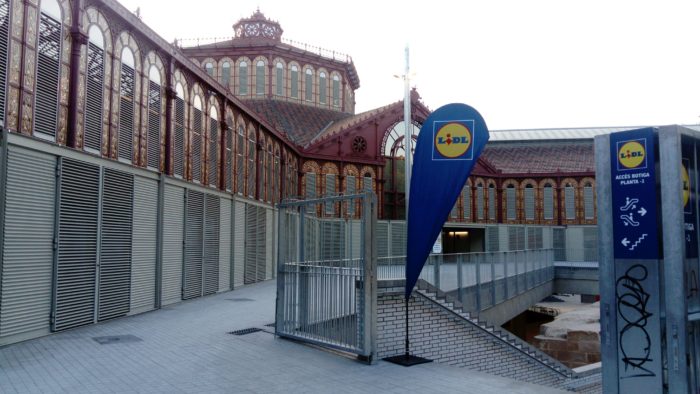Barcelona's markets and the 'Boqueria effect'.

On the 13 and 14th of July Sara Gonzalez briefly visited Barcelona to gain a better understanding of traditional markets there, as Barcelona is often regarded, internationally, as a model for other markets to follow. There, she spoke to officials from the Municipal Institute for Markets and two campaign groups which have raised concerns over the redevelopment of their neighbourhood markets.
Barcelona has a network of forty-four markets, some of which date back to the mid-late 19th century, with construction of new markets continuing through the 20th century, so that most residents in Barcelona can walk to their public neighbourhood market. In the mid 1980s the municipality of Barcelona began to recognise the important role that neighbourhood markets had in the life of the city and in the face of the expansion of out of town supermarkets and the increasing suburbanisation which threatened the Mediterranean, compact city model.
The municipality conducted research on neighbourhood retail and markets and established a comprehensive plan for the progressive redevelopment and modernisation of the network of markets. In 1991 a dedicated Municipal Institute of Barcelona Markets was born, with relative autonomy from the local authority to make decisions and run markets. To this date the Institute has redeveloped around half of its markets and, out of this experience, a “model for Barcelona markets” has emerged. This model involves the restoration of architectural features and the modernisation of services for storage, delivery and hygiene, and enhanced marketing to make markets more competitive vis a vis new forms of retail.

A Lidl supermarket underneath the redeveloped Sant Antoni Market.
This model is being exported internationally through the consultancy services that the Institute now sells. However some elements of this model have proved controversial, such as the almost compulsory establishment of a supermarket inside the modernised market, a carpark, the reduction of the number of stalls and the incorporation of bars and restaurants. In a city suffering from excessive tourism, gentrification and unaffordable housing, the Barcelona markets model has been criticised by some residents and campaign groups as a policy aimed at tourists and residents with high income power. An extreme example of this situation is the Boqueria Market, which is now mainly aimed at tourists.
Campaigning to avoid the “Boqueria effect” the Fem Sant Antoni neighbourhood association made explicit demands to the local authority to reduce the chances of their redeveloped market becoming a tourist destination, such as limiting the number of bars and eateries allowed in or close to the market, and excluding the market from being a stop on the tourist bus route. In a different neighbourhood, the group Gracia cap a on vas has questioned the need for the modernisation of their market, turning it into a “mega development” including a supermarket and a carpark. Given that, according to data from the Institute, the overwhelming majority of residents of Barcelona walk to their market, the campaign argues that the carpark is for the sole benefit of the supermarket and makes the redevelopment more expensive.
The situation of markets in Barcelona is unique and complex and very difficult to translate to the UK. The local authority has surely invested millions of euros in the modernisation of the network of markets but there are questions about who these investments are really benefiting.
